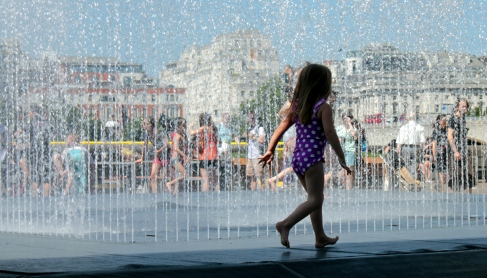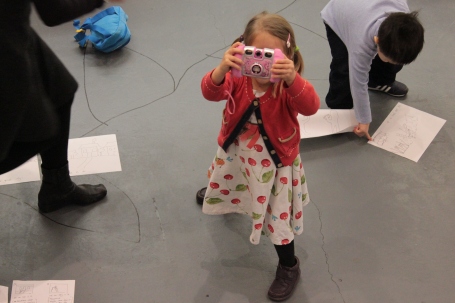 I’ve just had the pleasure of listening to a reinterpretation of ‘All You Need is Love’ by The Beatles. The track begins with a Spanish guitar before a gentle female voice recites a poem about being knocked off her feet 18 years ago. The repetitive strain of ‘All You Need is Love’ follows – love, love, love – before a series of voices list some of the more uplifting Beatles titles – Come Together, Here Comes the Sun, Please Please Me – in a joyous rap; then an oddly enchanting Bowie impersonation cites another personal poem over the continuing loop of all consuming love. It’s genuinely powerful and cleverly, beautifully put together.
I’ve just had the pleasure of listening to a reinterpretation of ‘All You Need is Love’ by The Beatles. The track begins with a Spanish guitar before a gentle female voice recites a poem about being knocked off her feet 18 years ago. The repetitive strain of ‘All You Need is Love’ follows – love, love, love – before a series of voices list some of the more uplifting Beatles titles – Come Together, Here Comes the Sun, Please Please Me – in a joyous rap; then an oddly enchanting Bowie impersonation cites another personal poem over the continuing loop of all consuming love. It’s genuinely powerful and cleverly, beautifully put together.
The track – recorded by seven members of local charity Headway North London in four afternoons during August – is the culmination of a music therapy summer project in conjunction with the Nordoff Robbins charity. All of the members taking part are brain injured; that is, they have all suffered from some event in their lives which has affected the way their brain works which has, in turn, affected profoundly the way that they can live their lives.
Julie, the owner of the gentle female voice at the start of the track, was indeed knocked off her feet 18 years ago, but rather than it being by love, it was by a car. She was left comatose and, all these years later, she’s still fighting to ensure that people like her – now brain injured and coping with it for life – are able to take part in society, maintain their confidence and self esteem and offer something to the world as a whole.
Talking to me, Julie describes the four afternoons as, ‘inspiring and intense’. For her, just organising herself to be in a place for four consecutive days is a challenge. The effort involved in coming up with ideas for a song, facing the pressure to sing and perform and play instruments – all in front of other people and in the presence of music professionals in a recording studio – and trying to remember to bring her harmonica for the sessions adds many layers to an already crowded and potentially confusing few days. It would be draining for anyone, but brain injury brings with it all sorts of side effects, such as tiredness, deprivation of senses, emotional problems and a fragile self confidence.
But in recalling the experience and listening to the song now, she reflects on a hugely rewarding and powerful week, not only for her but for her band mates – she calls them The ComaTones and already dreams of a tour and merchandise. Almost overcome by fear of his ability, the Spanish guitar player has to gather up all of his courage to play the introduction, despite being talented enough to feature in a BBC4 documentary; the opportunity drives one member to make the tortuous and difficult trip from his house to the studio each day; despite not having musical backgrounds or a singing voice, all contribute with apparent gusto, playing the bass, percussion and singing and speaking the chosen words. During a heated debate about what they might sing, one member steps aside for a rest and sits at the piano. Not having played since his brain injury, he belts out the theme from ‘Chariots of Fire’, silences the rest of the group and is amazed by his latent talent and probably reintroduces to his life the love of playing an instrument.
Brain injury is hidden to most people and misunderstood by those who might have heard of it. You can’t see it, or put a plaster over it. Some of those affected by it don’t even know they may have it. Brain injury can come about by way of a road traffic accident, or an assault or a fall; or through disease such as a tumour or a stroke. Brain injury is very common – it changes a person, their thoughts, their moods, the way they feel about themselves. It is hard to acknowledge and virtually impossible to heal. But with charities like Headway North London and Nordoff Robbins, the issues facing those with brain injuries can be addressed. As with anything, you only need to provide the right tools in life to make ANYONE shine. This is what these charities do, day in day out. The wholly uplifting stories coming out of this short week for seven such people is small testament to that. Why not check them out, and even help them out too?








